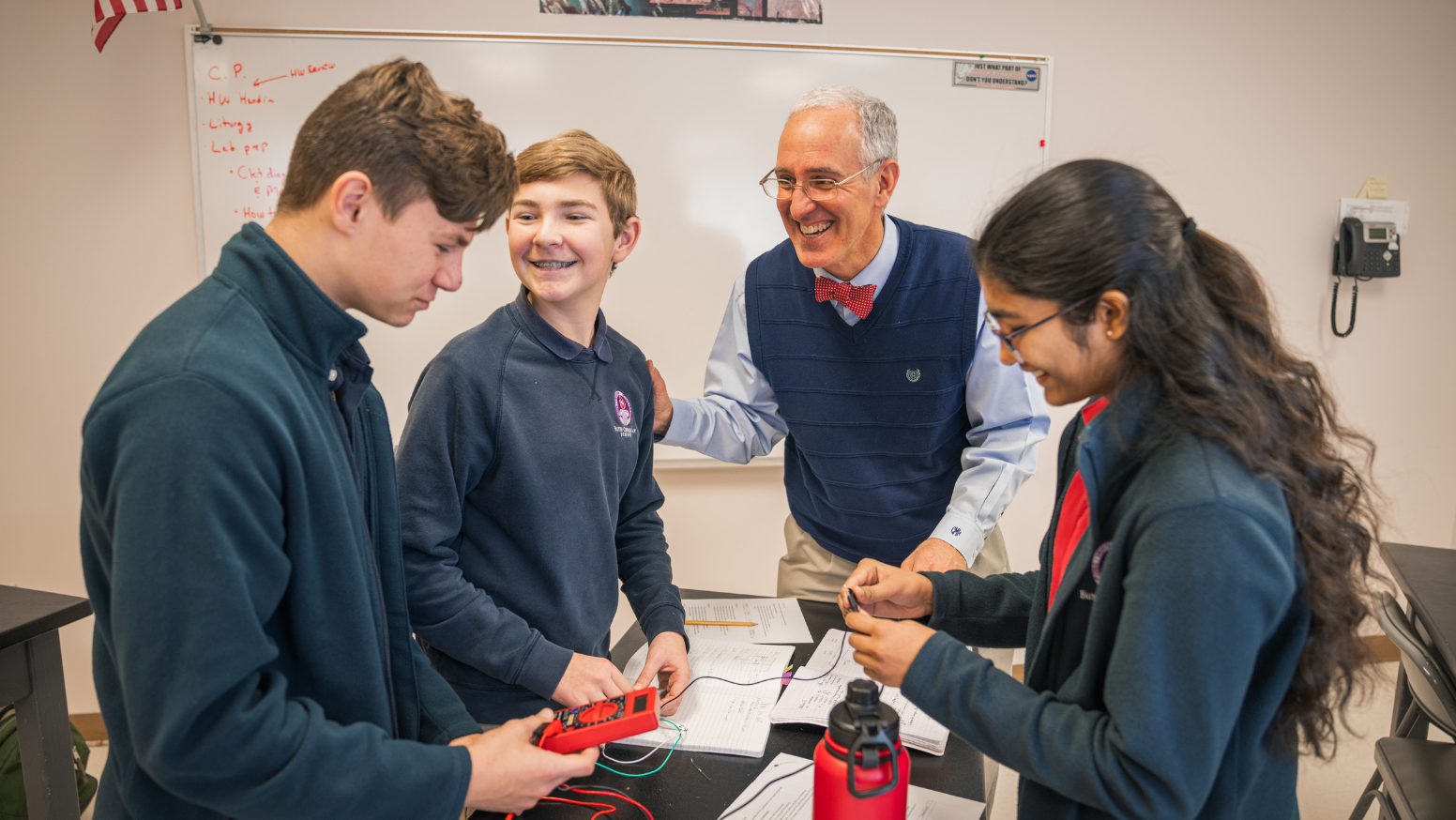-4.png)
One of the objectives of those who formed Christian Classical Education principles was to direct the
attention of the students Godward through math and science.
Much has been said in my lifetime about the conflict between science and religion. In a society of culture wars, this appears to be one of the skirmishes that regularly surfaces. At Faith Christian School, we see no such conflict, and that is how we engage our science and math studies. To understand why, we need to travel back over a millennium and examine the classical system.
In the late fifth and early sixth centuries, two men helped Christianize a Greek educational system. Boethius and Cassiodorus implemented the Quadrivium for study in the monastery. The Quadrivium consisted of arithmetic, music, geometry, and astronomy. Each of the four courses immersed the student in mathematics. This may seem strange for those studying the “arts,” but Cassiodorus wrote, “The obvious purpose was to direct our mind…from earthly things and to place it in a praiseworthy fashion in the divine structure.” Thus, the objective of those who formed Christian Classical Education was to direct the attention of the students Godward through math and science.
At Faith Christian School, we want to continue in that tradition. In basic science it is straightforward to pursue this goal. Nature studies build habits of wonder and reflection at an early age. Art classes enable students to ponder and recreate the beauty inherent in nature. The heart cannot help but rejoice. The intellect, however, can also delight in the Creation. Middle school classes such as Earth Science enable students to contemplate what Newton called “this most beautiful system of the sun, planets, and comets” that could “only proceed from the counsel and dominion of an intelligent and powerful Being.” Life Science, Biology, and Anatomy allow students to meditate on the exquisite nano engineering of processes such as respiration with its labyrinth of electron carriers, enzymes, potential gradients, and rotary motors producing energy for the cell. Furthermore, students not only examine the marvelous design but also memorize scripture that complements and reinforces the wisdom and power of God. In Math and Physics classes, students can reflect on the surprising usage of math to discover and describe the creation.
In 1960, Nobel Laureate Eugene Wigner, an agnostic, penned an essay entitled, “The Unreasonable Effectiveness of Mathematics in the Natural Sciences.” In Physics class, students read this essay at the beginning of each school year. Throughout the year we ponder together the inspiring order, variation, and usefulness of mathematics in modeling phenomena. Unlike Wigner, however, we are not surprised by the usefulness of mathematics because we know the Word, the one who spoke creation, including its mathematical structure, into existence.
Science had been thwarted for millennia by a pagan worldview. Aristotle brought no math into the study of creation. The classical scholars reinvigorated mathematics and science, and we at FCS seek to continue this pursuit. We do this because we want our students to be competent. The primary reason, however, is so that both their mind and their heart can exult in and worship the Creator, Soli Deo Gloria.
- By Carl Muench, Science & Mathematics



-1.png?width=296&height=50&name=Back%20To%20All%20Stories%20(1)-1.png)